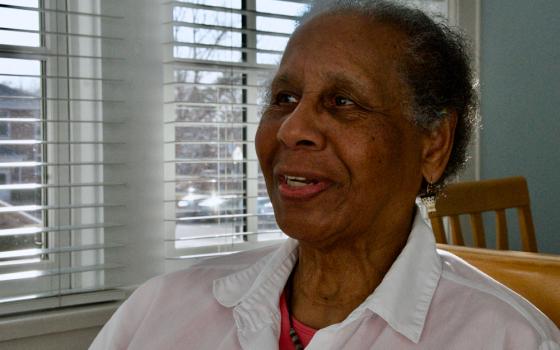
VIEWPOINT
Two years ago my husband and I, empty nesters for more than 20 years, moved from our four-bedroom split-level house to a three-bedroom condo and from a car-dependent life to an apartment community one and a half blocks from Washington, D.C.’s Metro. As part of the renovation of our new home we purchased Energy Star appliances, put in all compact fluorescent light bulbs and low-flush toilets, replaced leaky old windows with energy-efficient ones, and inefficient convectors with newer, more efficient models. Energy conservation was a key element in our choice of both location and our renovation.
Because our condo unit is among the largest in the building, and condo fees are determined on a square-foot basis, our monthly fees are among the highest. That would make sense except this fact: Our building is master-metered. Master metering means nobody except the management sees the monthly utility bills. All utilities are included in the monthly condo or rental fee. The result is our energy-conscious household of two is paying more for utilities than an energy-profligate household of four living in a smaller unit. Not seeing a bill for actual usage encourages waste -- everything from overlong showers to lights on in vacant rooms and open windows when the air-conditioning or heat is running. There is no incentive for individual residents to conserve on energy use in master-metered buildings. Savers don’t get lower bills.
The New York State Energy Research and Development Authority found energy use decreases of between 12 to 26 percent in buildings that converted to individual metering. With individual meters, residents see the real cost of their household usage and make choices to save -- or not. Why should anyone in a master-metered building conserve energy use when they don’t see a decrease in their monthly bills? Their condo fee remains the same, whether they conserve energy or not. Individual choices (in the winter, for example, “It’s too much trouble to turn down the thermostat every time I leave the apartment”) lead to collective poor outcomes, i.e., high utility bills.
In 1968 Garrett Harden wrote an article published in Science magazine that addressed the degradation of the environment that occurs when many individuals own and use a scarce resource in common. He used sheepherders and a common grazing area as a metaphor for what’s been dubbed “the tragedy of the commons.” Guided by self-interest, each herder saw an immediate personal advantage to adding more sheep to his herd and fattening them up. Eventually the common area was overgrazed and totally depleted. Every herder lost out.
Living in master-metered apartment buildings are a collection of individuals who share some common space and utilities and who have individual needs. Instead of devastation of the common grazing area, freedom at the apartment building commons brings a form of abuse to every single resident in the form of higher than necessary energy bills.
It’s the tragedy of the commons at work in the millions of master-metered apartments across the United States, with all residents losing out.
What can be done? In 2009, our building of 227 units spent $350,676 (up from $305,400 the year before) on electricity. If everyone in the building changed just one 100-watt incandescent bulb that’s used a few hours a day to a compact fluorescent light, we’d save about $5,000 a year. Compact fluorescent bulbs use 75 percent less energy than incandescents. It’s clearly in every resident’s interest to change at least one light bulb, but do they? No! Efficient low-flow showerheads would save on hot water heated by electricity as well as save on water and sewer costs, but residents show no interest, even if offered a subsidy to make the change. Resident education might change behavior, but, while worth a try, it’s difficult to accomplish and almost impossible to sustain. Not being responsible for the actual personal cost of usage in the form of individual bills encourages apathy that’s difficult to overcome.
Submetering offers a potential solution. Submetering provides for each apartment’s energy use to be measured and each household to receive its own utility bill for actual usage. But the cost of retrofitting to submetering is, in most cases, prohibitive. In our building, the estimate was well over $1 million. New technologies may bring down the price tag. Some governments have given grants or tax benefits for installing submetering.
However, submetering usually means the building’s management has to read the meters and collect the bills. These are not the utility company’s meters. This could be an onerous task for an already harried management. There are companies specializing in this type of meter reading and bill collecting and their fees have to be included in any cost-benefit analysis. Another obstacle is the condo or co-op board of directors and all of the voting owners, who have to be convinced that submetering is in the building’s best interest. Conservers will vote for it; abusers will vote against it.
There’s another issue related to submetering. While it does provide residents with the incentive to change their consumption habits, behavior pattern changes won’t be effective in a leaky, inefficient building. A building’s structural energy efficiency matters. That’s why an energy audit should be the start of work on lowering energy expenditures. Problems have to be identified before they can be solved.
Energy auditors look at the building’s systems, its structure and usage history and then make recommendations with cost/benefit analysis. Owners need to know what can be done, how long it would take to pay back the investment in recommended changes, how much can be saved annually and how the changes will affect residents or clients. State and local governments, interested in the environmental effects or energy waste, are beginning to provide some help to fund these audits.
According to the U.S. Energy Information Administration 2009 report, there are 24.5 million apartment buildings in the United States. If one quarter of these buildings are master-metered (a conservative estimate) that be more than 6 million buildings, and many more millions of people who live in them.
Most energy-saving incentives now available focus on single-family homes, even though, according to the U.S. Green Building Council, apartments and other large buildings annually are responsible for 35 percent of energy consumption and 60 percent of electricity use. Energy costs are included with the rent in more than 25 percent of apartment residences.
The census reports that most low-income people (approximately 70 percent) live in apartment buildings. Energy conservation could achieve lower housing costs without government assistance, reduce the use of fossil fuels, and decrease dependence on foreign oil. All levels of government need to take a look at master-metered buildings and how they can help the building owners address this energy-related tragedy of the commons.
[Joyce Siegel is a freelance writer living in Bethesda, Md. Her career included 10 years as public affairs officer at Montgomery County’s Housing Opportunities Commission.]



